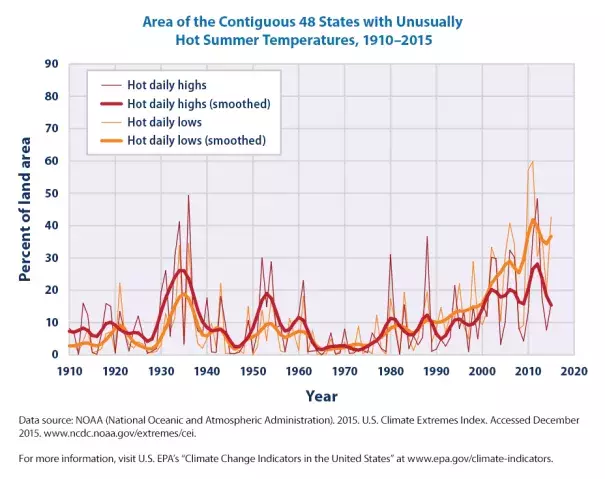Area of Contiguous 48 States with Unusually Hot Summers 1910-2015

Extreme summer heat has been increasing over the United States over the past century.
While the long-term trend of increasing heat is driven by increasing concentrations of greenhouse gases in the atmosphere, short-term spikes and slumps in 20th century temperatures were also driven by human activities.
The spike of hot summer temperatures in the 1930s largely represent the extreme heat of the Dust Bowl era. That heat was driven by large-scale land mismanagement in the Great Plains that resulted in dust-bowl conditions and the loss of surface moisture which would have otherwise provided evaporative cooling.
Anthropogenic aerosol forcing (e.g. light-reflecting sulfur pollution from coal-fired power plants) reduced reduced summer temperatures in the Northeast and Southeast from the early 1950s to the mid-1970s, and agricultural intensification may have suppressed the hottest extremes in the Midwest through evaporative cooling via irrigation.
For more detail on the anthropogenic factors that drove short-term spikes and slumps in US temperatures over the 20th century, see Chapter Six of the 2017 U.S. National Climate Assessment.


